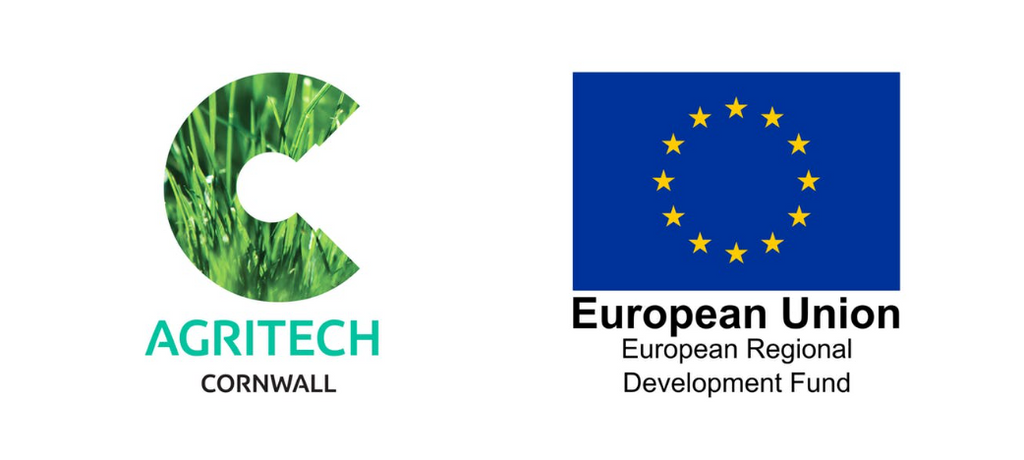News / Lameness
Pruex 5 point plan. £3000 annual reduction in antibiotic bill.
The Perkins family farm at Dinas Island in West Wales and are one of the main ram producer farms for Innovis, with 500 Abermax stock ewes and a 1,000 strong Lleyn flock with 500 in the Aberfield SR program and 500 put to a Lleyn ram for pure breeding.

The ewes are housed in December for March lambing due to the harsh weather conditions confounded on Dinas Island by a lack of shelter, and are turned out following the recording of ewe and lamb data, such as ease of lambing and birth weights. Prior to implementing the Pruex 5 Point Plan the farm were using lime with straw bedding in an attempt to limit various health issues including joint ill. Pregnant ewes were moved out of their pens weekly and run through an external footbath in an attempt to combat lameness. The worst ewes being targeted and segregated for individual antibiotics treatment. Maintaining clean and dry bedding was a constant battle. Detailed record keeping highlighted the costs of culling heavily according to foot health. Repeat offending ewes with foot problems were culled from the flock increasing the number of ewe lamb replacements needed. Neil noted that prior to using the Pruex products the farm records magnified that foot treatments were the main health burden and were utilising a significant amount of time, resources and money.
Since using Pruex in the lambing shed and in the water supply from December 2018 onwards, the family have stopped using lime as well as foot bathing completely and have seen significant reductions in lameness and lamb infections such as joint ill which used to occur in 2 to 3% of lambs. Pruex Stabiliser is applied as a mist directly onto the bedding in the ewes pens as well as the individual mothering pens daily. Neil has made some rough calculations himself and believes that by drying up the bedding with the mist of Pruex Stabiliser the savings in straw alone equate to the cost of the Pruex products, and that other health benefits such as reduced lameness and lamb infections such as joint ill are a bonus. His antibiotic bill has reduced by £3,000 annually, a major objective of his flock health plan. “The sheep sector is a low net user of antibiotics when compared to other meat sectors, but do use heavily during the lambing period. It’s been the focus of our work for this sector at Pruex, and this type of reduction shows what can be achieved in a small amount of time when farmers have the determination and focus portrayed by the Perkins family”, said Aled Davies,
founder of the company.
Water treatment is done via a dosatron pump with the whole farm receiving treatment 365 days of the year. This incorporates into the rotational grazing program utilised with each water trough readily treated. The water troughs are routinely cleaned before fresh break moves and given an extra 300ml shock treatment of Pruex Water Plus plus as the trough refills.
The detailed record keeping of foot treatments continues and in 2019 the total treatments on the farm have dropped by 68% and the total for 2020 in on track to mirror that improvement. This not only saves time and labour, but it has also reduced the culling rate on the farm due to a reduction in repeat offenders. The farm have also noted a significant reduction in joint ill cases which were
previously treated by catching lambs outdoors, with
problem cases injected with antibiotics. Since the 2019 lambing the number of joint ill cases have reduced greatly with only 3 lambs needing treatment annually.
The plan of action for the 2021 lambing season is to build on the knowledge gained over the last two lambing seasons. In addition to misting the bedding with Pruex Stabiliser and treating the water with Pruex Water Plus, and in order to reduce both workload and toxic bacterial loading on newborn lambs, Pruex Base Layer will be used instead of lime and straw in the mothering pens.
Pruex Base Layer is dust extracted chopped straw (2cm), treated at bagging with Pruex bacteria. It will be used in conjunction with Pruex Stabiliser to absorb moisture and populate good bacteria in the area where lambs need protection during the early stages of their lives.

September 2019 - Cornwall Lameness Study Kicks Off
Earlier this year, Pruex was awarded an innovation grant from Agri-Tech
Cornwall to drive research, development and innovation.
The funding is being used to generate data on lameness control on 10 Cornish
dairy farms; enhancing resilience, efficiency and profitability on the farms
involved, whilst providing Pruex with invaluable data to develop and innovate
its products across the industry.
Lameness is one of the most significant welfare and productivity challenges
facing dairy cows. Lameness control plans are rising in the inclusion in welfare
assurance schemes, with many dairy farms now having to quantify the number
of lame cows on their farm and demonstrate an active control plan to reduce
lameness.
Several studies on UK dairy herds have estimated that on average, more than
half the cows in some herds could experience lameness problems in any single
twelve-month period (source AHDB dairy).
However, these studies have also shown that there is a large range of
incidence of lameness – indicating that dairy cow lameness can be improved
through herd management changes.
As calculated by AHDB dairy, the average cost of an incidence of lameness is
approximately £180. The figure takes into account treatment costs, loss of
yield and potential for shortened productive life of the cow. At current levels
of incidence this could equate to a financial loss of nearly £15,000 for an
average-sized herd, or to put it another way, a cost of over 1p per litre of milk
produced on the farm.
Lameness can also have further health implications in a dairy cow, leading to
mastitis complications, metabolic diseases and fertility issues.
The welfare of the farmer also can’t be ruled out – no farmer likes to see lame
cows suffering.
The term lameness covers many conditions ranging from bacterial infections to
physical and mechanical pressures. It is important to understand that many
factors can cause lameness in different ways.
An understanding of the different types of lameness found on individual farms
will help to build a structured approach to reduce the causes of lameness on
those farms.
How The Pruex Lameness Study Will Be Run
They project will run over a 6 month period on 10 Cornish farms.
Pruex are successfully reducing bacterial lameness on UK farms by:
1. Firstly: cleaning water.
Reducing the risk of disease-causing biofilm within water pipes and
troughs by flushing through with WaterPlus. Providing dairy cows with
clean water, so they are not challenged with harmful bacteria every time
they drink.

2. Secondly: generating foam.
AHC is diluted with water treated with WaterPlus to generate a foam
which the cows walk through.
No need for a footbath, no harmful chemicals, no toxins, no carcinogens,
no heavy metals (in fact Pruex products have been listed as ‘environmentally
beneficial’).
Dominate the cow’s feet with non-infective soil bacteria.
Follow the progression of the study over the next 6
months.


